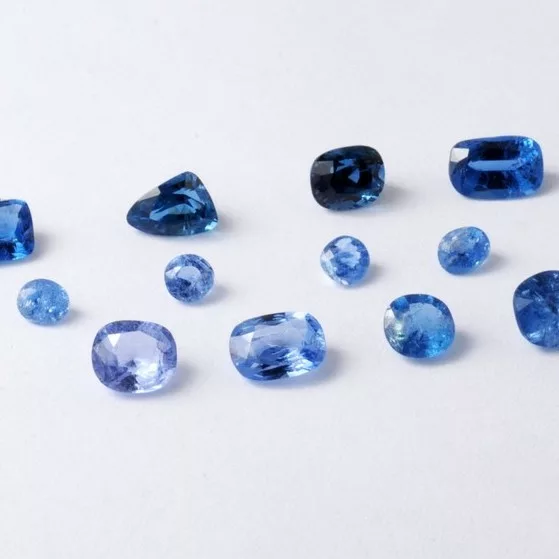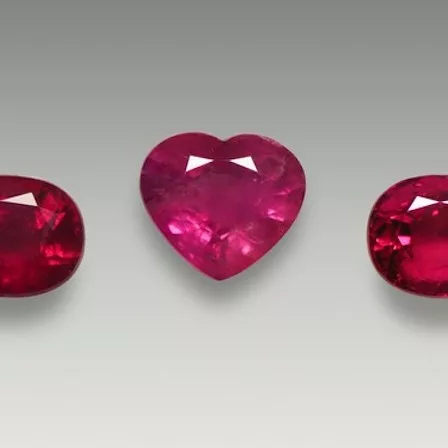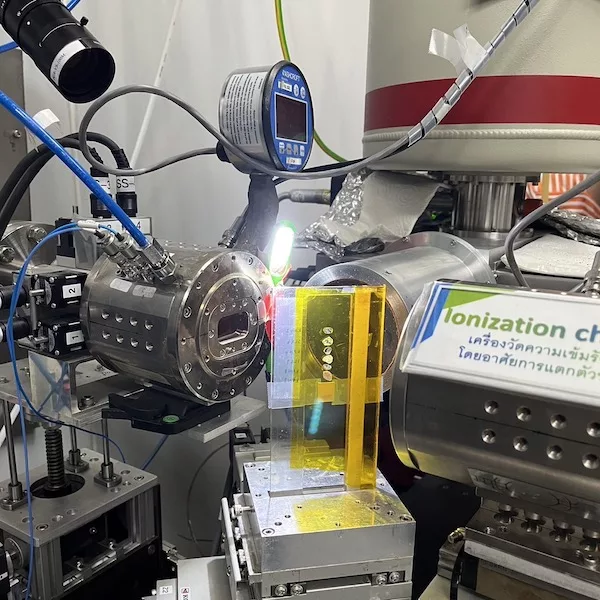Cobalt spinel from Bai Buoi mine, Yen Bai, Vietnam
Keywords: Cobalt spinel, Vietnam, Bai Buoi mine, Bãi Bưởi, Yen Bai
The cobalt bearing spinel from Lukande, Tanzania, discovered in 2019, has attracted much attention and several papers were published recently (Stephan & Muller., 2022, Krzemnicki et al., 2023, Furuya, 2023). Almost at the same time as the Tanzanian spinel, a new spinel deposit was found at the Bai Buoi (Bãi Bưởi) mine near Luc Yen. These two deposits of blue spinel are quite similar in various gemmological characteristics such as colour, fluorescence and chemical composition, except for inclusions.
Location and general properties
The Bai Buoi mine is located 7km northwest of Thac Ba Lake, Yen Bai Province, Vietnam. The mine was reportedly discovered in June 2019 (Blauwet, 2020, Fujita 2022). By 2021, five mining sites around the area were producing spinels. (Fujita, 2022, Tanida 2023). For this study the author examined 37 faceted samples from this new mine in Vietnam.
The colour of the samples shows a range of shades of blue. They range from pure blue, deep blue, slightly greyish blue to pale purplish blue. None of them are of electric cobaltblue colour that is occasionally found in Vietnamese cobalt spinels, but they are sufficiently vivid as are the Tanzanian spinels. The samples ranged in size from 0.12ct to 0.61ct. Most of them are visibly included. Their refractive indices range from 1.714 to 1.718 and their specific gravities from 3.58 to 3.64, which is within the normal range for magnesium spinel. They show weak to moderate green fluorescence under long wavelength UV radiation, but are inert under short wavelength UV radiation.
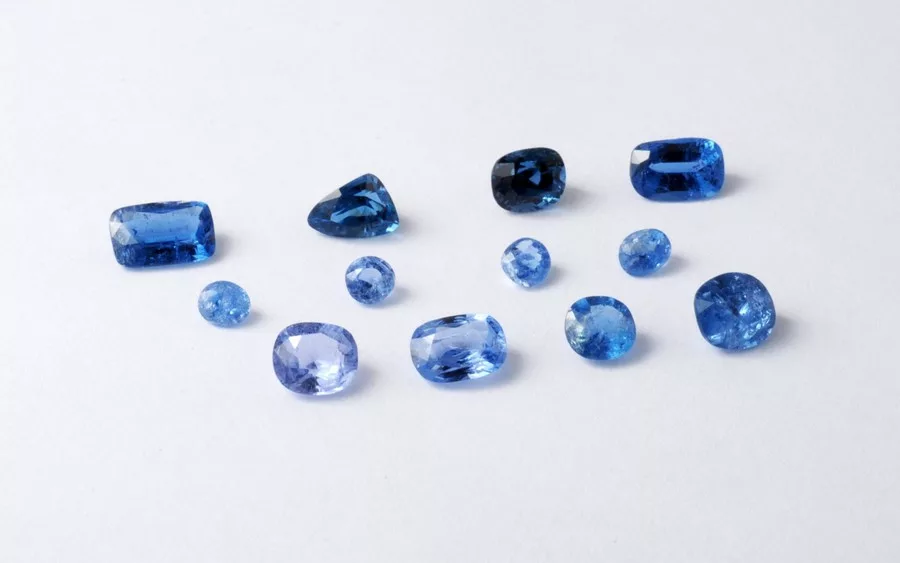
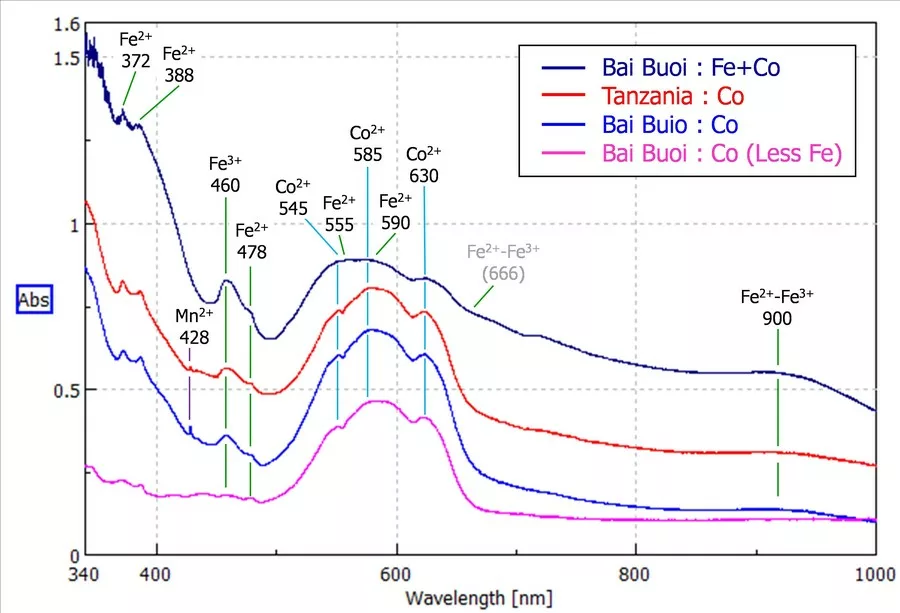
UV-Vis spectra
The most similar property between Bai Buoi and Tanzanian spinel is the UV-Vis absorption. The blue colour of spinel is due to cobalt and iron. The blue trace in Figure 2 represents the pure blue type of Bai Buoi spinel, which is the majority of them. This type shows the strong Co related absorption and also moderate Fe related absorption. It is quite similar to the one of Tanzania (red trace). And whether it is prominent or weak, most of them show the Mn2+ related absorption peak at 428nm. Few of the relatively dark blue samples show a strong iron absorption as shown in Figure 2 (dark blue trace). Also, some of the pale blue to violet coloured spinels show quite weak Fe-related absorption features (see pink trace in Figure 2). In this type all Fe-related absorption is weak even at the UV-edge.
Fluorescence and photoluminescence
Although the intensity is different, many of the blue spinels from Bai Buoi fluoresce green (511nm centred band) under long-wave UV light. Figure 3 shows the fluorescence spectra of a Vietnamese (Bai Buoi) and Tanzanian cobalt-bearing spinel excited by a 365nm LED. Both show the green broad band emission centred at 511nm. This broad band emission is assumed to be due to Mn2+(Koivula et al., 1991). They also show the emission series related to Cr3+ in the red spectral region.
In addition to the UV fluorescence, the photoluminescence shows similar features as mentioned in previous literature by Krzemnicki et al. (2023) about Tanzanian spinels. With 523 nm laser excitation, the Bai Buoi spinels show three types of luminescence (Figure 4). The red trace represents a high-Cr type of blue spinel (spectrum normalized by multiplication of 0.1) which is characterized by the emission series related to Cr3+. The low-Cr type of blue spinel (green trace) shows a broad band emission centred at 655 nm. And the blue trace represents a mixture of these two types. The 655 nm emission is said to be due to Mn4+ (Khaidukov et al., 2020), but its intensity is not directly correlated with the Mn content in our samples, but seems negatively correlated with the Cr content.
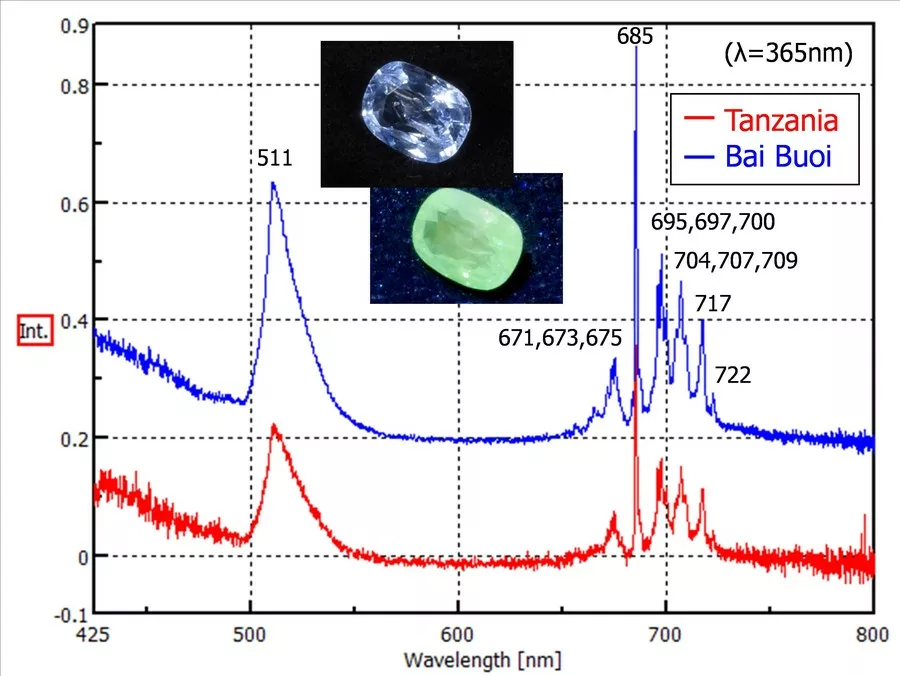
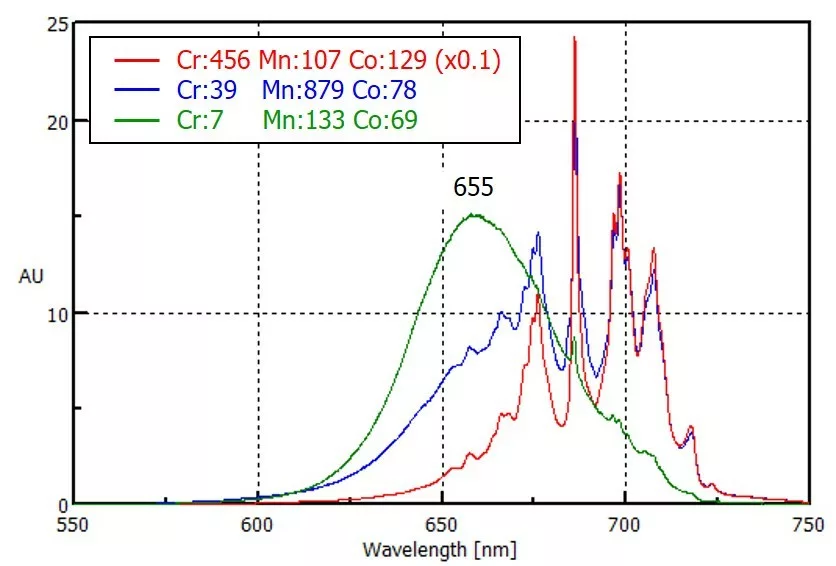
Chemical composition
The chemical fingerprint tested by LA-ICP-MS of Bai Buoi spinel and Tanzanian spinel is also similar, especially for the colouring elements of Fe and Co content (Figure 5), as well as the UV-Vis spectra are similar. However, the Zn content tends to be higher in Tanzanian spinels than in Bai Buoi spinels (Figure 6).
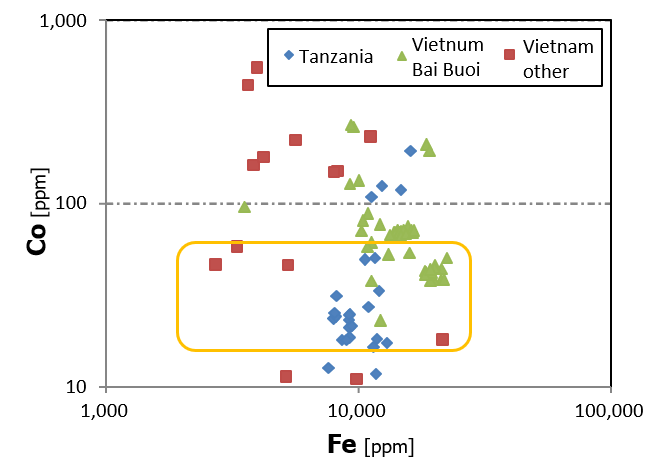
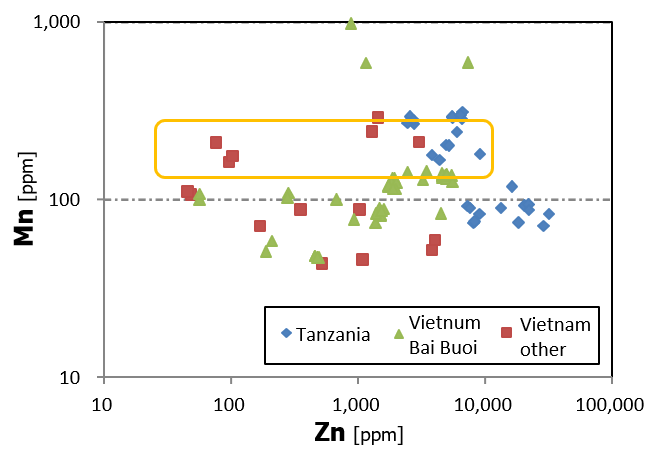
Inclusions and internal features
On the other hand, the inclusions in Bai Buoi spinel are quite different from the Tanzanian ones. In few samples, the dislocation “needle”-like inclusions are seen (Figure 7). And it is common to see flake-like inclusions that are scattered in parallel (Figure 8). Among the crystal inclusions, apatite is the most common (Figure 9). Although it is seen only in one sample, a titanite cluster was identified by Raman spectroscopy (Figure 10). However, none of them have högbomite lamellae that are very abundant in Tanzanian spinels.
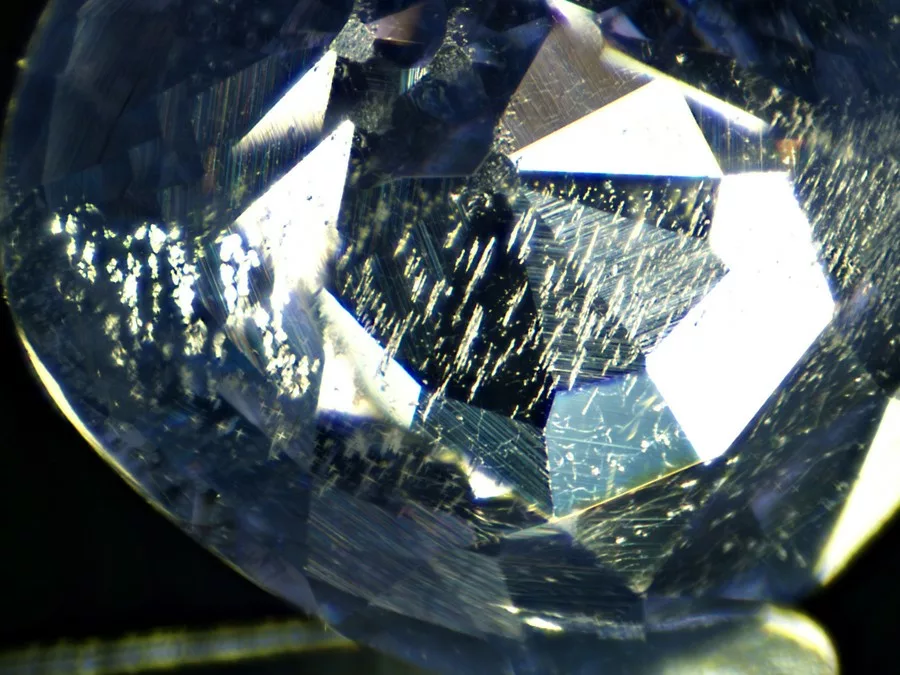
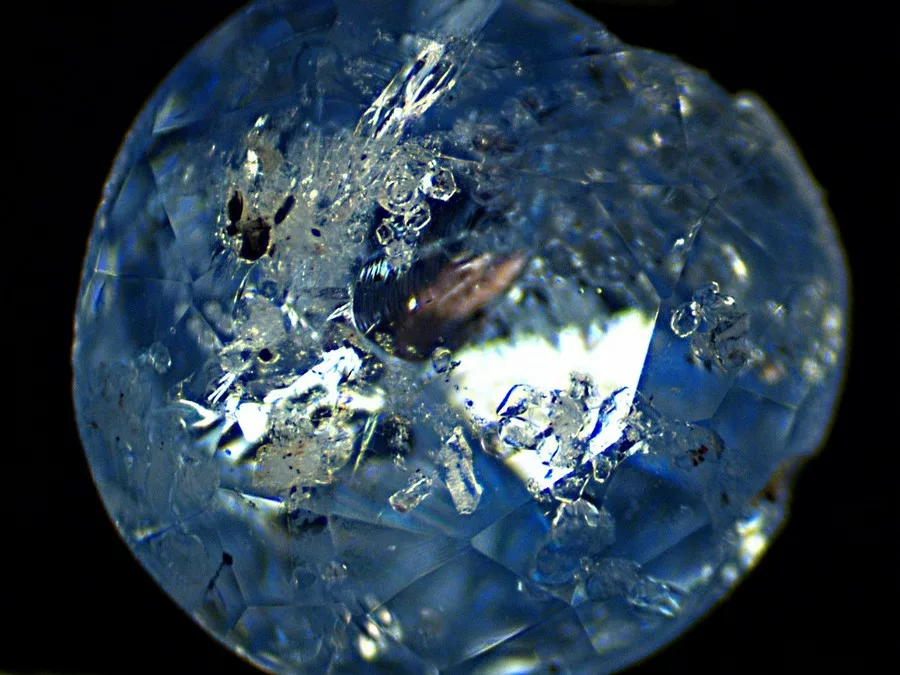
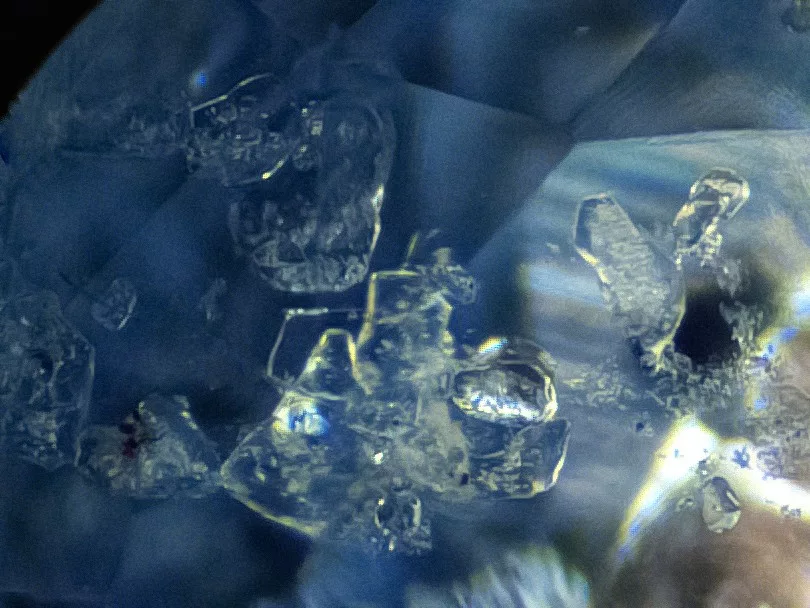
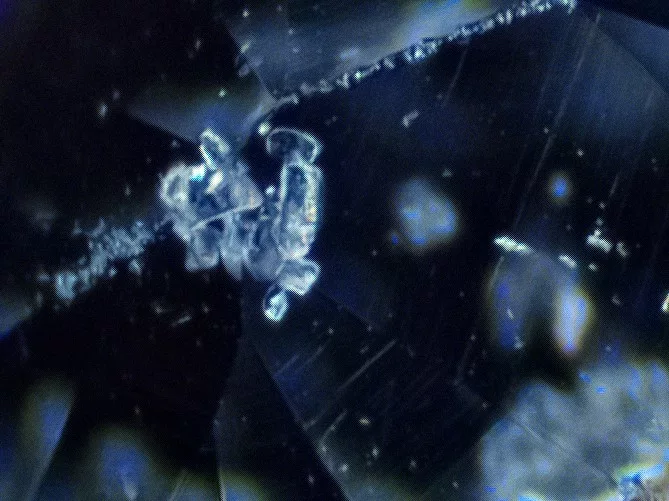
Conclusion
The blue cobalt-bearing spinels from the Bai Buoi mine in Vietnam have many similar gemmological characteristics compared to the Tanzanian blue spinels. In particular, the UV-Vis spectra and fluorescence are almost identical. The trace element content is also similar, especially for the colouring elements. However, the inclusions are quite different as Bai Buoi spinels contain some of the typical inclusions known from Vietnamese spinels since many years (Smith et al. 2008).
References:
- Blauwet, D., 2020, Visit to a New Blue Spinel Mining Area in Vietnam, The Journal of Gemmology, 37, 2, 142-143
- Furuya, M., 2023, Cobalt spinel from Mahenge, Gem Information, 49, 8-9
- Fujita, K. Tanida, T, 2022, The newly found cobalt spinel from Bai Buoi mine in Vietnam and its distribution to the market, personal communication.
- Khaidukov, N.M., Brekhovskikh, M.N., Kirikova, N.Y., Kondratyuk, V.A. & Makhov, V.N., 2020, Luminescence properties of spinels doped with manganese ions. Russian Journal of Inorganic Chemistry, 65, 8, 1135–1141
- Koivula, J.I., Kammerling, R.C. & Fritsch, E., 1993, Gem News: Ruby mining near Mahenge, Tanzania. Gems & Gemology, 29, 2, 136
- Krzemnicki, M.S., Leuenberger, A., Balmer, W. A., 2023. Cobalt-bearing Blue Spinel from Lukande, near Mahenge, Tanzania, Journal of Gemmology, The Journal of Gemmology, 38, 5, 474–493
- Smith C., Beesley C.R., Darenius E.Q., Mayerson W.M., 2008, A closer look at Vietnamese spinel,. InColor, Spring, pp. 11-13
- Stephan, T., Henn, U., Muller S., 2022, New finds of cobaltbearing spinel near Mahenge, Tanzania, Zeitschrift der Deutschen Gemmologischen Gesellschaft. 71, 3-4, 57-64
Acknowledgments:
- Katsunori Fujita of Tomofin Co. and Takashi Tanida of Gem Eiko Co.
- Yamanashi Prefectural Industrial Technology Center

